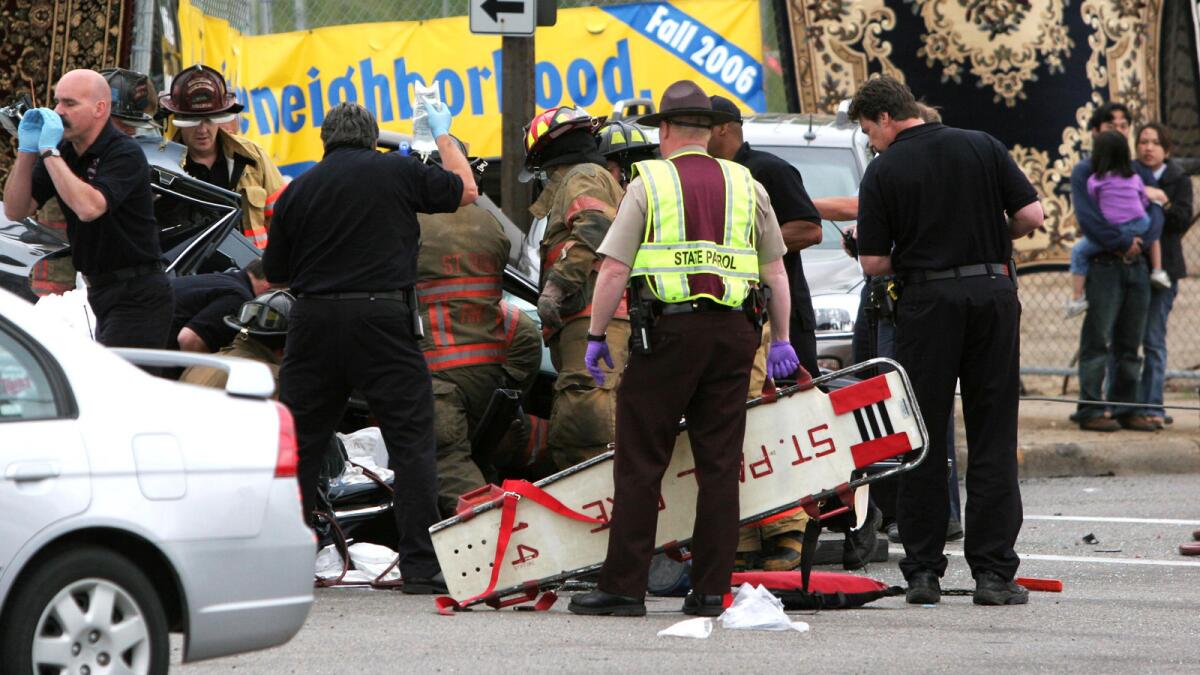Jury rules Camry defect partly to blame in fatal crash

- Share via
Toyota Motor Corp.’s 1996 Camry had a design defect that is partly to blame for a 2006 crash that left three people dead in Minnesota, but the man driving the car also was partially at fault, a federal jury ruled Tuesday.
Koua Fong Lee was driving a 1996 Camry when it slammed into another vehicle at a high speed after he exited Interstate 94 in St. Paul. He has long insisted he tried to brake, but the car wouldn’t slow, while Toyota argued there was no design defect and Lee was negligent.
Lee was convicted of vehicular homicide and sentenced to prison for the wreck, which also seriously injured two people. He won a new trial after reports surfaced about sudden acceleration in some Toyotas, and questions were raised about the adequacy of his defense. Prosecutors opted against a retrial and he went free after spending 21/2 years behind bars.
Lee and his relatives, along with other people who were injured or lost loved ones in the crash, later sued Toyota in U.S. District Court in Minneapolis.
During the trial, Lee’s attorney, Robert Hilliard, told jurors that there was a defect in the car’s design. He said the Camry’s auto-drive assembly could stick, and when tapped or pushed while stuck, it could stick again at a higher speed.
Hilliard also accused Toyota of never conducting reliability tests on nylon resin pulleys that could be damaged under heat and cause the throttle to stick.
“This is what makes the car go. This is what turns it into a torpedo, a missile, a deadly weapon,” Hilliard said during his closing argument.
Toyota said there was no defect in the design of the 1996 Camry, and that Lee was negligent. The company’s attorney, David Graves, suggested that Lee was an inexperienced driver and mistook the gas pedal for the brake, and that’s why the car accelerated.
Toyota also noted that Lee’s car was never subject to the recalls of later-model Toyotas.
Jurors were asked to decide whether there was a defect in the design of the 1996 Camry that was unreasonably dangerous, and if so, whether that defect caused the plaintiffs’ injuries.
The crash killed the driver of the other vehicle, Javis Trice-Adams Sr., and his 9-year-old son, Javis Adams Jr. His 6-year-old niece, Devyn Bolton, was paralyzed and died in October 2007.
Trice-Adams’ daughter, Jassmine Adams, who was 12 at the time, was seriously injured, as was Trice-Adams’ father, Quincy Ray Adams. Those two and Bolton’s mother, Bridgette Trice, were the other plaintiffs in the case.
More to Read
Inside the business of entertainment
The Wide Shot brings you news, analysis and insights on everything from streaming wars to production — and what it all means for the future.
You may occasionally receive promotional content from the Los Angeles Times.










